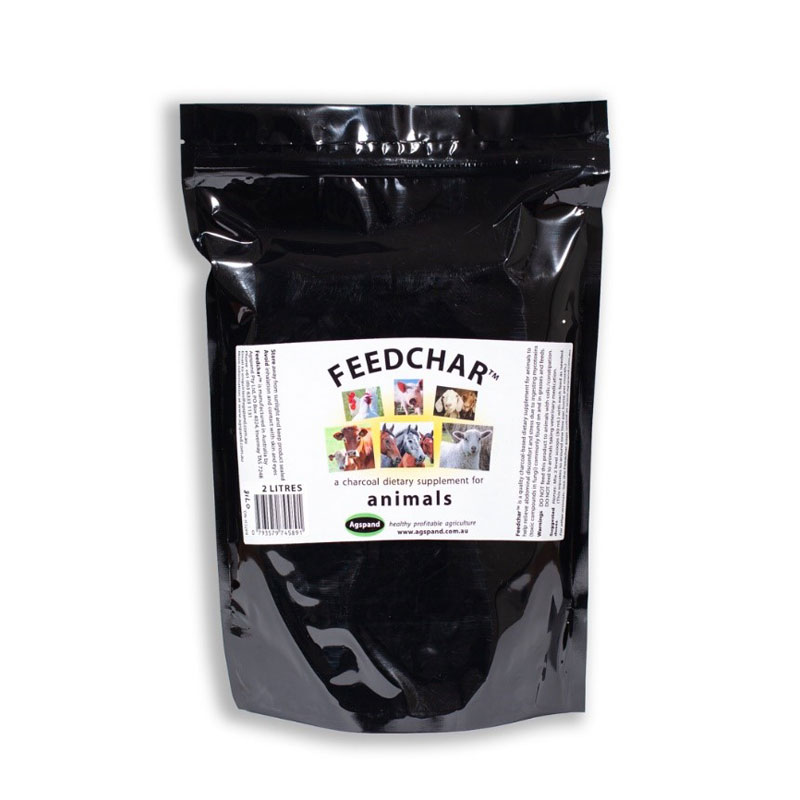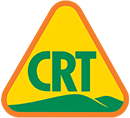Agspand's Feedchar 5L
Agspand's Feedchar 5L
Manufacturer: Agspand Pty Ltd
Suggested doses:
Most animals will self-medicate (feed themselves) if some Feedchar is simply left in a separate container (e.g. trough or bin) close to their normal feed or water areas. Ideally place the container undercover, or allow for rainwater to drain if left outside. For herds and calf-sheds, raise the container off the ground, to deter animals from standing in it. Replenish the Feedchar when the container is empty
Otherwise, Feedchar can be mixed through an animal’s feed.
HORSES
Mix 2 scoops (30 mL) of Agspand’s Feedchar™ with each feed, as needed. If supplied once a day, this equates to around 1 litre per horse per month.
PONIES and FOALS
Mix 1 scoop (15 mL) of Agspand’s Feedchar™ with each feed as needed.
CATTLE and SHEEP
For a small-to-medium herd/flock in a shared area of up to 40 animals, simply spread 10 litres of Agspand’s Feedchar™ in a closed-ended trough or large container. Like horses, they too will nibble and lick the Feedchar to self-medicate as they need it.
Warnings:
DO NOT feed this product to animals with constipation or colic
DO NOT FEED this supplement to animals taking veterinary medication.
Endophytes are a plant’s means of selfprotection against insect attack and animal overgrazing. They typically occur in phalaris, tall fescue grasses and perennial ryegrass, which can explain the nervous disorder “ryegrass staggers”. In severe cases the mycotoxicity from endophytes can contribute to laminitis. Horse paddocks can be covered in these plants because often they have been overgrazed for years and receive little attention. In their battle for survival the remaining plants contain endophytes at their base, in the sheath, and also the seed heads.
More information:
How Feedchar might work for animals:
At certain times of the year, particularly from spring through to autumn, endophytes or fungi containing mycotoxins commonly appear on and in grasses. Mycotoxins can also linger for a number of years in hay and grain-based feeds harvested off high-endophyte plants.
Mycotoxins are found in endophytic fungi, which live in the plants, as well as saprophytic fungi, living on the plants. Endophytes are a plant’s means of self-protection against insect attack or animal overgrazing. Concentrations of endophytic fungi appear on the head of the plant when it is stressed from lack of moisture, or when the soil nitrogen is high.
Endophytes typically occur in phalaris, tall fescue grasses and perennial ryegrass. The shoots and flowers of endophyte-affected ryegrass in particular contain high levels of the Lolitrem B mycotoxin. Horse paddocks can be covered in these plants because often they have been overgrazed for years and receive little attention. In their battle for survival the remaining plants’ defence is to contain high levels of endophytes at the base-sheath of the plant (early spring and autumn), and also in the seed-heads in summer.
Mycotoxins are compounds in the fungi that interfere with an animal’s digestive wellbeing. They can affect a horse’s nervous system, making them agitated, flighty, and sensitive around the abdomen. In severe cases, mycotoxicity can contribute towards laminitis and reproductive disorders.
Ruminant animals such as cattle and sheep experiencing mycotoxicity show signs of ill-thrift and scouring. This affects their weight gain and creates stress for the animals, with the knock-on effects of dark-cutting meat and poor growth rates.
When added as a feed supplement, the components of Agspand’s Feedchar™ are designed to adsorb (attract) the mycotoxins so they both pass through the digestive system. Animals should show less physical discomfort and stress from mycotoxicity. Testimonials from clients providing Feedchar to horses describe a marked improvement in their animals’ behaviour after two weeks.
Continuous benefits of agspand Feedchar in agriculture:
There is a flow-on effect to a Feedchar as a remedy for feed-toxicity in the digestive tracts of animals.
Later, once excreted and in contact with soil, the animals’ manure containing the charcoal and other nutrients is utilised by beetles and worms, who act as natural soil-carbon sequestration armies!


